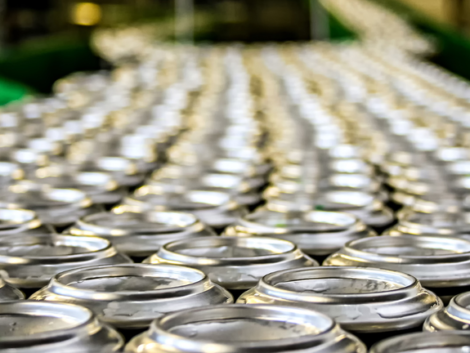Helping to reduce energy usage
Oven loggers can help to reduce energy usage and meet sustainability targets says Sencon’s Christ Stewart…
All major can makers are committed to ambitious sustainability targets. Metal containers remain one of the most environmentally friendly forms of mass packaging, yet there is always more to be done. One key area of concern is energy usage during the can making process.
Anything that can be done to reduce this contributes to vital sustainability goals. As global energy prices continue to rise dramatically, this also has significant cost saving benefits.
One global packaging manufacturer estimates that curing and drying ovens account for up to 75% of natural gas and 20% of the electricity used in beverage can making plants.
So, controlling energy consumption by ovens and dryers is clearly an important part of any can maker’s green strategy, and just like domestic energy savings, small adjustments can have large cumulative effects.
To implement sustainable energy reductions, can makers need to be sure their ovens are working at peak efficiency. Ideally, oven temperatures should be brought up to the lacquer curing point as quickly and evenly as possible, then stay on target for exactly the recommended time.
In this way, ovens can be run as close as possible to coating suppliers’ specification and only use the minimum energy required. However, unless you have reliable and repeatable data about what is going on inside your ovens, this could risk under-curing coatings and wasting even more energy and money.
There are various solutions for monitoring the thermal efficiency of ovens. Some are more useful than others. Air thermometers record temperatures inside an oven but give no direct data about temperatures achieved on the product itself.
Another approach is to attach thermal strips to the product. These do show that a certain ‘spot’ temperature has been achieved at some point during the cycle. However, they cannot record how long the product has been heated by the correct amount (temperature over time), which is what really matters for successful coatings cure.
A dedicated oven data logger is the best solution as it gives a complete and detailed temperature profile of an oven’s performance. Sencon’s widely used SL2000 Oven Logger, for example, is sent through ovens in real production time.
A range of thermal probe attachments enable the same logger to be used in all 2-piece ovens (IBO/OBO, pin-chain) and 3-piece ovens (‘wicket’/sheet, ‘side-stripe’/weld seam). It can also be used to check temperatures inside the dryer after the washer.
Sebastian Steiner, product development manager at Sencon, said: “The SL2000’s ultra-compact design doesn’t interfere with air flow in an oven, which ensures accurate readings. And it has enough memory to log the various ovens on a line without needing to download data in between.”
An oven logger is a simple, low-cost tool for ensuring all ovens are working at optimum efficiency without compromising product quality.
Regular oven logging helps can makers to better understand and control their energy usage. As the climate crisis deepens and energy prices continue to rise, this is a win-win for everyone.








